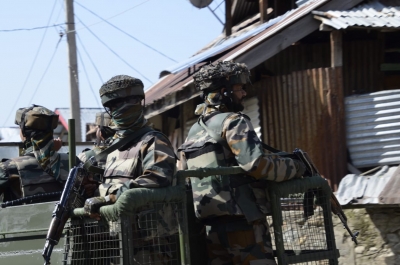By Sanjeev Sharma New Delhi, Nov 27, : .A particular operation that was used in the 26/11 Mumbai attacks saw attackers penetrate deep into the target and then kill as many as possible, Rand Corporation had noted in a 2009 report.
The attempt to reduce operational risk was demonstrated by the dispersal of attackers into separate teams.The failure or elimination of one team would not have prevented the other teams from taking action once the attacks started.
According to the report, the only point of failure in the attack was when the terrorists were still at sea while they were en route to Mumbai.
These tactics were a break with the more common suicide bombings associated to jihadist groups.
However, armed attacks have plenty of precedent in the annals terrorist.They can be traced back to the 1972 Lod Airport attack in Tel Aviv in which three members the Japanese Red Army opened fire on arriving passengers and hurled handgrenades at them.
In the 1970s, hostage situations and barrage were common.The report stated that the combination of different tactics was what was new.
According to the testimony of the surviving terrorists, the attackers were out to kill as many people as possible.
“However there is uncertainty that the sole purpose of this operation’s planners was to slaughter.
The report stated that the Mumbai attacks of 2008 were similar to the 2006 Mumbai train attack, which saw seven bombs kill 209 people, and the 1993 Mumbai attacks, where 257 people died in 13 bomb blasts.It would appear that bombs would have been more efficient if body count was the only criterion.
“Indiscriminate bombings such as those in London and Madrid have been criticized by some jihadists as being against an Islamic code.It is possible that the 2008 attacks could have appeared more selective if shooters were used, even though most of the victims in Mumbai were ordinary Indians shot to death at random.The report stated that it also allowed the attackers to engage the soldiers and police in what their supporters could call a heroic last stand.”
Another factor could have been security.Based on previous terrorist attacks, Indian authorities focused on truck bombs at hotel rooms.Rail security focuses on keeping bombs from trains and not armies out of train stations.
“An armed attack might have been more appealing than suicide bombings for the attackers.” Their fate was sealed once they opened fire.However, the operation’s prolonged duration allowed them to engage in sustained slaughter where they could clearly see the results.They were still considered martyrs, but they could also see themselves as more like warriors than mere suicide bombers.” the report stated.
Rand Corporation reported that all of the facilities targeted were soft targets.
The terrorists did not attempt to defeat the armed guards at any point during the attacks.The terrorists attacked targets that were not guarded.
Even in areas where security forces could be expected, their reconnaissance revealed that they would only be lightly armed.
The main targets were the central train station and the Cama and Albless Hospital.
Other locations were also targeted along the route as targets of opportunity.The train station and two hotels were the best places to get a high body count, despite the drive-by shootings.
The terrorists sought the “emotional value” of the dramatic locations, including the Leopold Cafe (a well-known site) and the hotels.
According to the report, the massacre at Chabad centre was motivated by its own logic.
Transcripts of phone conversations between terrorists and their handlers during attacks show that terrorists at Chabad centre were instructed by their handlers to kill Jewish hostages to “spoil relations between India & Israel”.
According to reports, the attackers used satellite phones and cellphones as well as their own cellphones.They also had Blackberries.
“A well-planned attack like the one in Mumbai, which was certainly pre-planned, would not have required communication between terrorist operators and their headquarters.
According to the Indian authorities, the terrorists were in constant contact with their handlers, who were presumably based in Pakistan, during attacks.The Indian authorities intercepted the phone conversations and found that Pakistani handlers urged the attackers to kill, reminded them of the importance of Islam, and gave them tactical advice that was partly gleaned from watching the live coverage of the event.
“Despite the exhortations to kill the hostages, some observers believe (and there are reports that the surviving terrorist thought) that the attackers believed that somehow they would escape alive.During the siege, terrorists called each others to discuss their plans of maneuver.
They also spoke to the media via cellphones to demand the release of their hostages.The report said that Indian authorities believed they were dealing with hostage situations, which further confused their tactical response.”
(Sanjeev Sharma can be reached at Sanjeev.s@ians.in)
san/arm #repeat #Kashmir #Delhi #Mumbai
.







